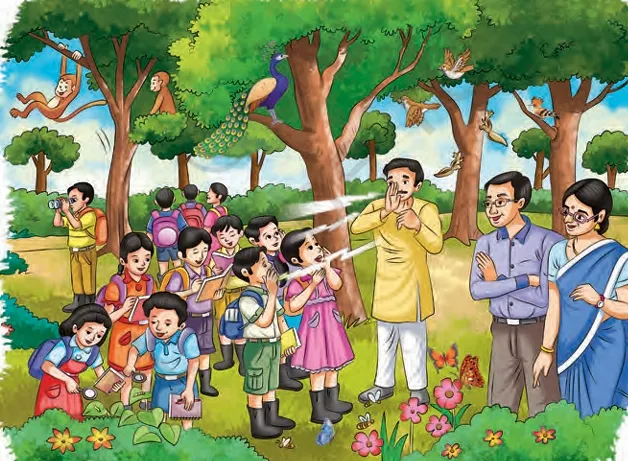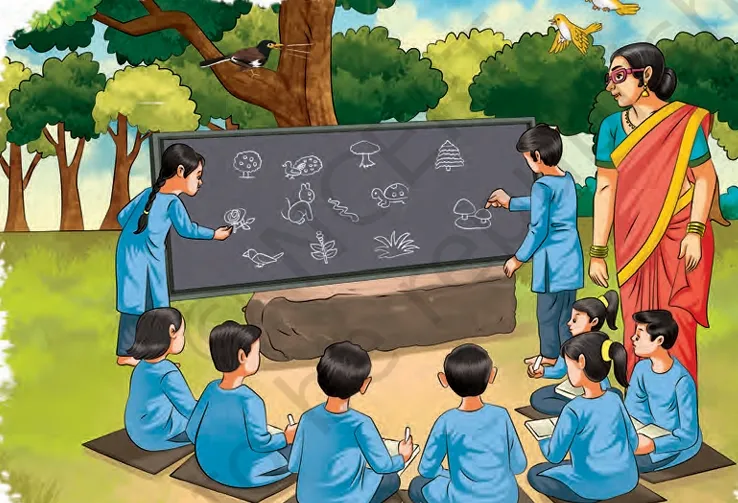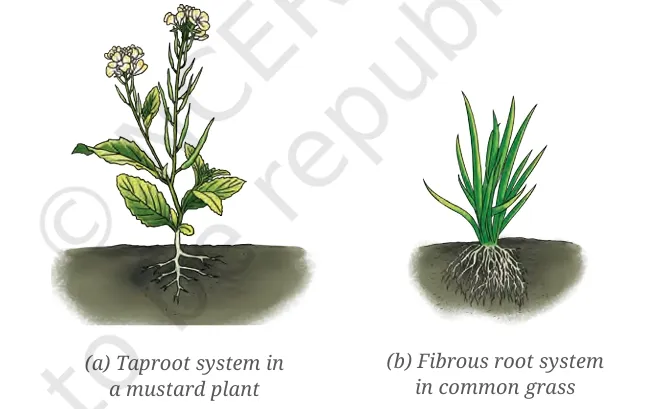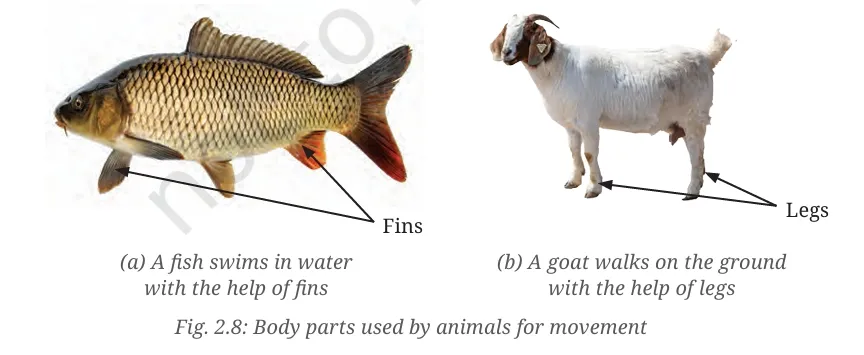
NCERT Solutions for Class 6 Science Curiosity Chapter 2: Chapter 2 of the Class 6 Science syllabus focuses on "Diversity in the Living World." It helps students distinguish between living organisms and non-living objects based on characteristics like movement, growth, reproduction, and response to stimuli.
This chapter forms a key part of the NCERT syllabus and frequently appears in school exams. Understanding this topic is important for developing scientific thinking and curiosity about the natural world. Students should revise concepts thoroughly and refer to previous year papers and exam patterns to score well. Practice exercises and NCERT solutions enhance understanding and exam readiness.
NCERT Solutions for Class 6 Science Curiosity Chapter 2 Diversity in the Living World
Chapter 2 introduces students to the fascinating world of living and non-living things. It encourages curiosity by helping learners observe and question the differences between objects that grow, breathe, move, and reproduce (living) and those that don’t (non-living).
Through real-life examples and simple activities, the chapter builds foundational scientific skills like classification and observation. It also explains key features of life, such as the need for food, sensitivity to the environment, and life cycles. This chapter sets the stage for understanding biology and promotes a deeper interest in exploring the living world around us.
NCERT Solutions for Class 6 Science Curiosity Chapter 2 Question Answers
Below, we have provided the NCERT Solutions for Class 6 Science Curiosity Chapter 2 – Diversity in the Living World. These solutions cover all important questions and concepts to help students understand, revise, and perform well in exams with confidence.

Let Us Enhance Our Learning
1. Here are two types of seeds. What differences do you find among the roots and leaf venation of their plants?

-
Wheat: Fibrous root, parallel venation
-
Kidney beans: Taproot, reticulate venation
2. Group animals based on habitats:
A – Aquatic: Dolphin, Crocodile, Whale, Tortoise
B – Terrestrial: Horse, Sheep, Squirrel, Earthworm, Pigeon
C – Amphibians: Frog
3. Type of root and venation in radish:
-
Root: Taproot
-
Venation: Reticulate
4. Differences between mountain goat and plains goat:
-
Mountain goat: Shorter legs, stronger hooves, better grip – adapted to rocky terrains
-
Plains goat: Longer legs, suited for flat grassy areas
5. Group animals on a different feature (e.g., flying ability):

-
Can fly: Pigeon, Bat
-
Cannot fly: Cow, Whale, Fish, Lizard, Tortoise, Grasshopper, Cockroach (short distances only)
6. Effects of deforestation and what to do:
-
Effect: Loss of biodiversity, climate change, soil erosion
-
Solution: Plant trees, conserve forests, raise awareness
7. Flowchart analysis – What are ‘A’ and ‘B’?
-
A: Radish
-
B: Grass
8. Questions Sanjay can ask Raj about Gudhal (Hibiscus):
-
Does it have a woody stem?
-
Is it taller than a herb?
-
Do its branches grow close to the ground?
9. Examples of Group A and B from the table on pg 33:
-
Group A (Dicot, Taproot): Hibiscus, Chickpea, Radis
-
Group B (Monocot, Fibrous root): Grass, Wheat, Maize
10. Duck vs pigeon feet – observation and function:
-
Duck feet: Webbed, useful for swimming
-
Pigeon feet: Not webbed, adapted for perching/walking
Extra Questions for Class 6 Science Curiosity Chapter 2
Below, we have provided extra questions for Class 6 Science Curiosity Chapter 2 Diversity in the Living World. These questions will help students practice more, test their understanding, and prepare effectively for exams and classroom discussions.
1. What is biodiversity?
Biodiversity means the variety of living organisms—plants, animals, and microorganisms—found in a particular region or on Earth. It indicates how rich and balanced an ecosystem is.
2. What is venation in leaves?
Venation refers to the pattern of veins in a leaf. There are two types:

-
Reticulate venation – veins form a net-like pattern (e.g., hibiscus).
-
Parallel venation – veins run parallel to each other (e.g., grass, banana).
3. What are fibrous roots? Give one example.

Fibrous roots are thin, bushy roots that grow from the base of the stem and spread out in all directions. They help in holding the soil and absorbing nutrients.
Example: Grass.
4. What is the difference between monocot and dicot seeds?
-
Monocot seeds: One cotyledon, parallel venation, fibrous roots (e.g., maize).
-
Dicot seeds: Two cotyledons, reticulate venation, taproots (e.g., chickpea).
5. Name three ways animals move.
Animals move in different ways:
-
Walking (e.g., goat)
-
Flying (e.g., pigeon)
-
Swimming (e.g., fish)
They use body parts like legs, wings, and fins.
6. What is a habitat?
A habitat is the natural place where an organism lives. It provides food, water, air, shelter, and the right conditions for growth.
Examples: Forest, pond, desert.
7. What are the three types of plants based on stems?
-
Herbs – small plants with soft green stems (e.g., tomato)
-
Shrubs – medium-sized plants with woody stems (e.g., rose)
-
Trees – tall plants with hard, woody stems (e.g., mango)
8. What is adaptation?
Adaptation is a special feature or behavior that helps a living being survive in its environment.
Example: Camels have humps to store fat and survive in deserts.
9. Give two examples of terrestrial habitats.
-
Forests
-
Deserts
These are land-based habitats.
10. Why do desert plants have thick stems?
Desert plants like cacti have thick, fleshy stems to store water. This helps them survive in hot, dry conditions where water is scarce.
11. What kind of roots and venation does wheat have?
Wheat has:
-
Fibrous roots
-
Parallel venation in its leaves
It is a monocot plant.
12. What is the difference between a shrub and a herb?
-
Shrub: Medium-sized with woody stems and branches near the ground (e.g., rose).
-
Herb: Small plant with soft green stem (e.g., mint).
13. What body parts do fish use to swim?

Fish use fins to swim. Their bodies are streamlined to reduce water resistance and move easily in water.
14. What is the role of plants in biodiversity?
Plants support biodiversity by:
-
Providing oxygen through photosynthesis
-
Giving food and shelter to animals
-
Helping maintain the balance of nature
15. What happens when habitats are destroyed?
When habitats are destroyed, animals and plants lose their homes and food sources. This leads to a loss of biodiversity and disturbs the balance in nature.
NCERT Solutions for Class 6 Science Curiosity Chapter 2 PDF Download
NCERT Solutions for Class 6 Science Curiosity Chapter 2 help students understand the concepts in a clear and easy way. These solutions follow the latest 2025–26 syllabus and provide correct answers to all textbook questions.
They are useful for homework, class tests, and exam preparation. Students can revise the chapter quickly with the help of these answers. Below, we have provided the PDF of NCERT Class 6 Science Curiosity Chapter 2 Solutions for easy access and download.
NCERT Complete Solutions for Class 6 Science Curiosity Chapter 2
Study without using the internet
Benefits of Using NCERT Solutions for Class 6 Science Curiosity Chapter 2
Here are some benefits of using NCERT Solutions for Class 6 Science – Curiosity Chapter 2: Diversity in the Living World:
1. Conceptual Clarity
NCERT solutions explain answers in a step-by-step, easy-to-understand manner, helping students build a strong foundation in science concepts like biodiversity, classification, and adaptation.
2. Aligned with Exam Syllabus
These solutions strictly follow the latest NCERT syllabus and exam pattern, ensuring that students are well-prepared for both class tests and final exams.
3. Saves Time in Revision
During exam time, students can quickly revise important topics and questions using NCERT solutions without going through the entire textbook again.
4. Improves Writing Skills
Well-structured answers serve as a guide for how to frame clear and complete answers in exams—especially helpful for scoring in descriptive questions.
5. Better Homework and Classwork Performance
Students can complete their assignments more accurately and confidently by referring to these solutions, improving their daily academic performance.
6. Useful for Self-study and Doubt Clearing
If a student misses a class or has doubts, NCERT solutions provide reliable support for independent learning and clarifying concepts at home.
7. Supports Activity-Based Learning
Chapter 2 involves many observations and nature-based activities. NCERT solutions encourage scientific thinking and curiosity, going beyond rote memorization.
NCERT Solutions for Class 6 Science Curiosity Chapter 2 FAQs
1. What is biodiversity?
2. What are taproot and fibrous root systems?
Are these solutions aligned with the CBSE syllabus?
3. What is leaf venation?








